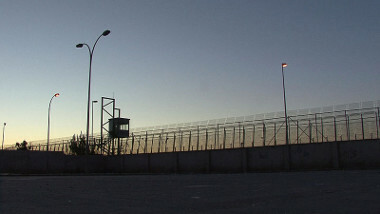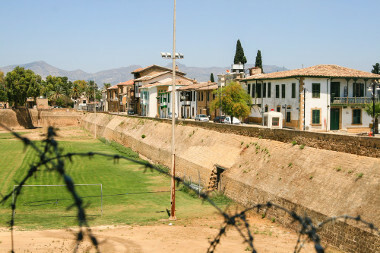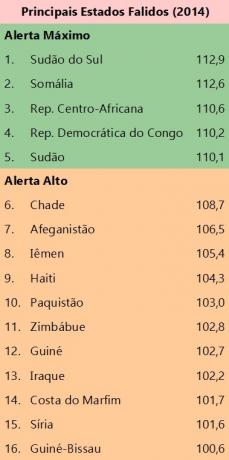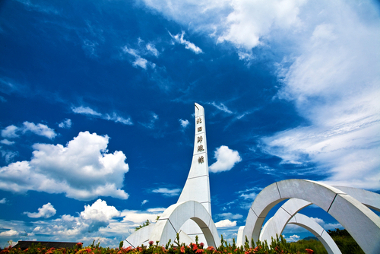Although the times of Globalization claim the closer approximation of different parts of the planet, with the decrease of distances and obstacles, there are still several walls that divide the world and that continue to spread across he. If, on the one hand, we have the ease of travel and communication, on the other we have the adoption of policies to contain these facilities, through the imposition of barriers aimed, above all, at the division of people and the materialization of borders that exist only in the political imagination of governments and some peoples.
Below you can check a brief summary of the main walls in the world today. If, before, the Berlin Wall it was nicknamed by the Western capitalist countries the “Wall of Shame”, what then of the current walls erected by these same countries?
Israel wall
O Israel wall – also called West Bank Wall – it is one of the most controversial walls today, as it is established around the area where the territories of the Palestinian peoples are located, who lost part of their areas after
the establishment of the State of Israel by the UN in 1947 and subsequent developments to that historical episode.
Image of the Wall of Israel in the West Bank
The construction of this wall began in 2002 and is still in the execution phase. Its objective is to isolate the Islamic peoples of the West Bank from Jewish territory on the grounds that this would prevent the proliferation of terrorist attacks. The prospect is that, in the end, the West Bank wall will be just under 800 km.
There are several criticisms directed at the Wall of Israel, such as that it would separate families, isolate the Palestinian people from their sources of work and resources. in addition to accusations that this wall was being built in areas beyond the border, further reducing the already tiny territory of the Palestinians.
wall of mexico
O wall of mexico it has been built since 1994 by the United States, mainly with the articulation of agreements referring to NAFTA (North American Free Trade Agreement). Built in various parts of the border between the two countries and currently with more than one thousand and one hundred kilometers long, its objective is to contain the migratory wave of Mexicans and other peoples towards the USA.

Wall built on the outskirts of the Mexican city of Tijuana
In addition to the barrier itself, the Mexico Wall has inspectors inside and outside its buildings, as well as motion detection equipment and other ways to guard the border. However, even with the barrier, many Mexicans migrate from one area to another, not to mention the number of people who die along the way, often made by specialists in human trafficking, the so-called "coyotes".
Do not stop now... There's more after the advertising ;)
This wall is considered by many to be a symbol of the current geopolitical order, which is marked by the division of the world between developed northern and southern countries. underdeveloped, thus expressing the relationships of economic and historical inequality, in addition to the dependency relationships between the different parts of the planet.
Ceuta and Melilla Walls
The cities of Ceuta and Melilla are located in the extreme north of the African continent, in Morocco, and are bathed by the Mediterranean Sea. However, they are of Spanish domain, being considered as autonomous cities of Spain. For this reason, many African immigrants move to these areas in order to reach Spanish territory.

Wall built in the city of Melilla *
Therefore, Spain also decided to create two walls, one in each city. Even so, the number of immigrants is very high and it is not uncommon for people to die heading towards Spanish territory via the Mediterranean Sea. The length of these walls is 20 km.
Cyprus Wall (green line)
The Cyprus Wall, also called the Green Line, is a barrier within the European island that has been dominated by various peoples throughout history. After the country's independence, several conflicts broke out involving the Turkish majority and the Greek minority. For this reason, several attempts at peace were promoted, which culminated in the establishment of the green line by the UN and the construction of the wall in the city of Nicosia, in 1974.

View from the Chipe Wall, on the Nicosia Green Line
Although part of the wall was destroyed and there was some tension between the two sides, it still exists. However, it is allowed to cross from one side to the other, although the barrier still serves as a kind of surveillance and also as a form of territorial demarcation.
In addition to all these barriers, there are still several other walls around the world, such as the one built by Egypt in the border region with the Gaza Strip; what divides Kuwait from Iraq and even a wall between India and Pakistan in Kashmir, among other cases. In any case, the existence of these walls overturns the myth that, with technological advances, borders would be more fluid and less strong. On the contrary, the fixation of these boundaries still remains a keynote in the contemporary global geopolitical context.
* Image credits: Stephane M. heavy / Wikimedia Commons
By Me. Rodolfo Alves Pena


